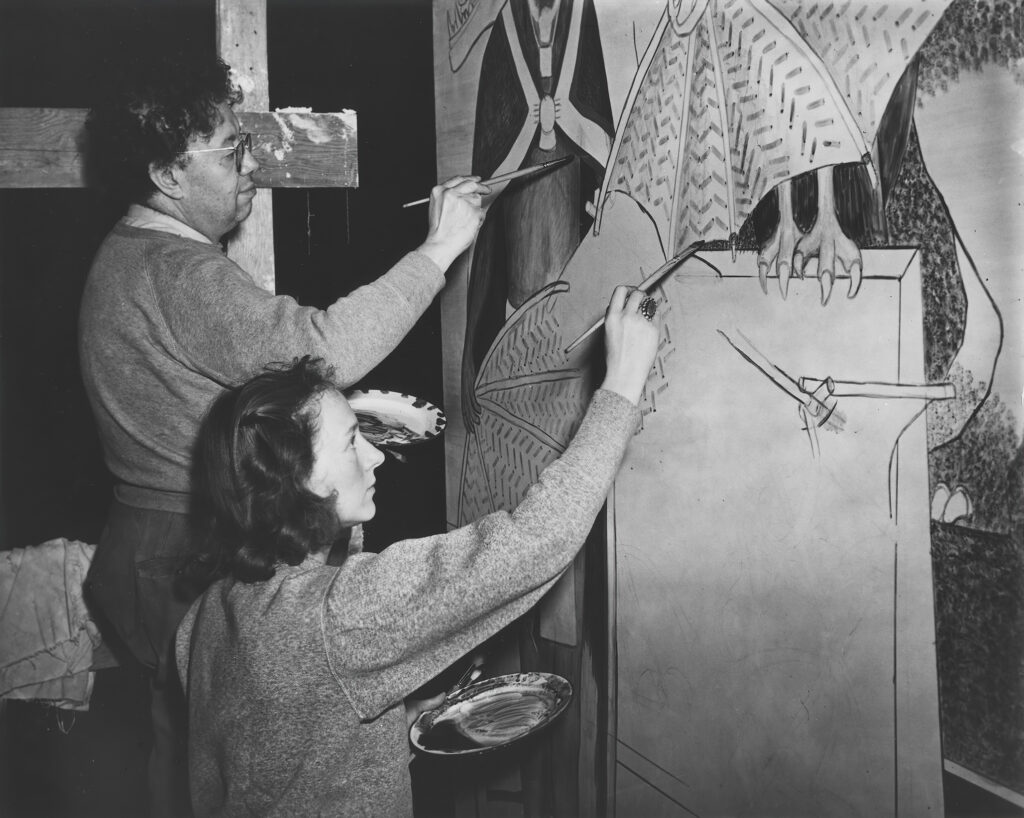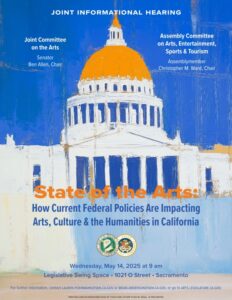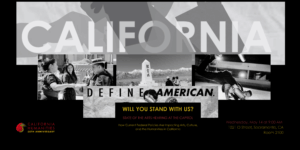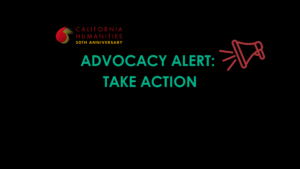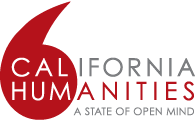Image Above: Diego Rivera & Emmy Lou Packard painting for the Golden Gate International Exposition, on Treasure Island in San Francisco Bay, 1938-40. Photograph Gelatin silver print, vintage. Courtesy of Throckmorton Gallery and Richmond Art Center
“Emmy Lou Packard: Artist of Conscience,” organized by the Richmond Art Center, was an interpretive exhibition – accompanied by a print publication and panel discussion event that was supported by a Humanities for All Quick Grant. The exhibition explored the legacy of artist and activist, Emmy Lou Packard (1914–1998), a remarkable, though over-looked, artist known for her paintings, prints and murals, as well as her social and political activism. We caught up with Amy Spencer, Project Director of “Emmy Lou Packard: Artist of Conscience,” who has shared Packard’s rich history with us, and has given us a look into the Richmond Art Center’s recent exhibit and programs exploring Packard’s life and work supported by a Humanities for All Quick Grant.
Who was Emmy Lou Packard, and what was her impact as an artist and activist?
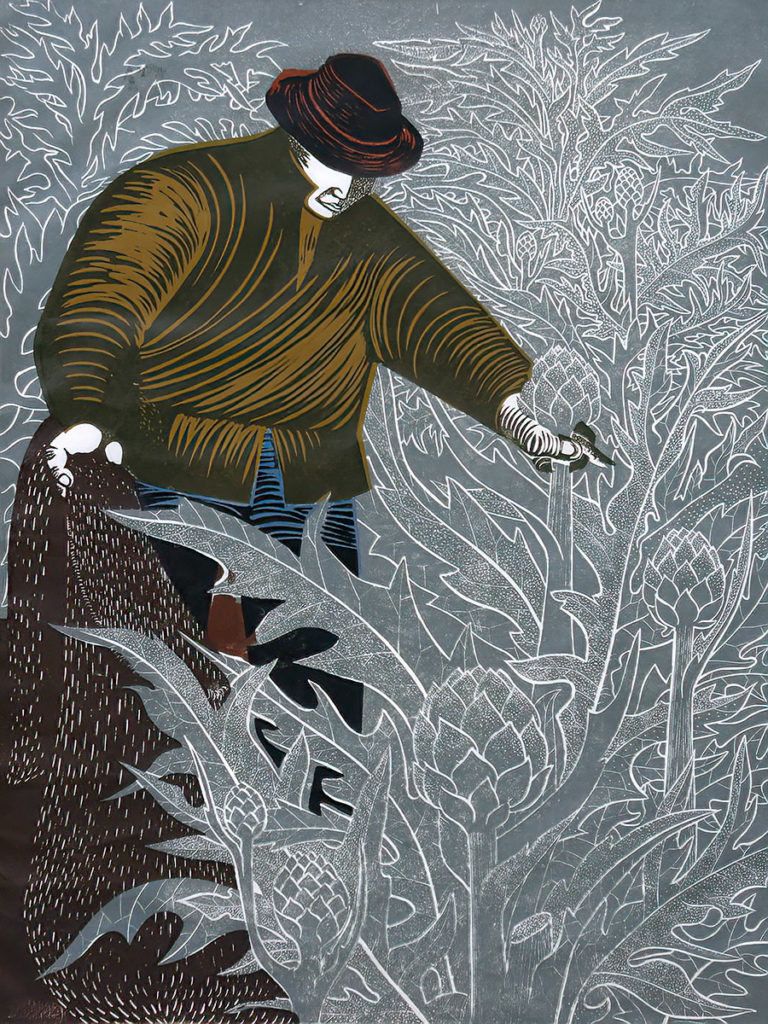
Emmy Lou Packard was a 20th century printmaker, painter, and activist whose work addressed issues of inequality—such as racial and gender discrimination, and low wages—that continue to confront us today.
Packard is perhaps best known for her relationship to the great muralist and painter, Diego Rivera. Born in Southern California in 1914, Packard lived briefly in Mexico as a child, where her mother convinced Rivera to give 12-year-old Packard art lessons. Later, when she was a young adult, Rivera invited Packard to be his chief assistant when he came to America to create the Pan American Unity fresco in San Francisco in 1940. Packard is depicted as a central figure in the mural—the artist in the red sweater standing at an easel.
Packard’s friendship with Rivera, as well as his wife Frida Kahlo, helped shape her political and artistic vision, yet it is her printmaking that made her a household name in the Bay Area during the 1950s and 1960s. Packard felt strongly that all people should be able to acquire beautiful art, and creating prints in multiples was the best way she could make her artwork accessible. Her prints promoted the dignity of labor, celebrated the beauty of the natural environment, and progressive principles such as peace, diversity and the joy of children. Packard’s most famous work, Peace is a Human Right (1949), was used in posters and billboards protesting nuclear weapons and the Vietnam war.
With support from California Humanities, Richmond Art Center presented the exhibition Emmy Lou Packard: Artist of Conscience (June 22 – August 20, 2022), the largest survey of Packard’s work ever put together. Curated by Robbin Légère Henderson and Rick Tejada-Flores, the exhibition included over 70 artworks, sketches, objects, and ephemera organized around key periods of Packard’s life and work. It was a critical and popular success: over 3,500 visitors attended the exhibition and related public programs at Richmond Art Center this summer.
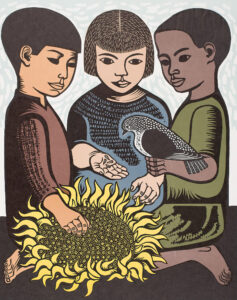
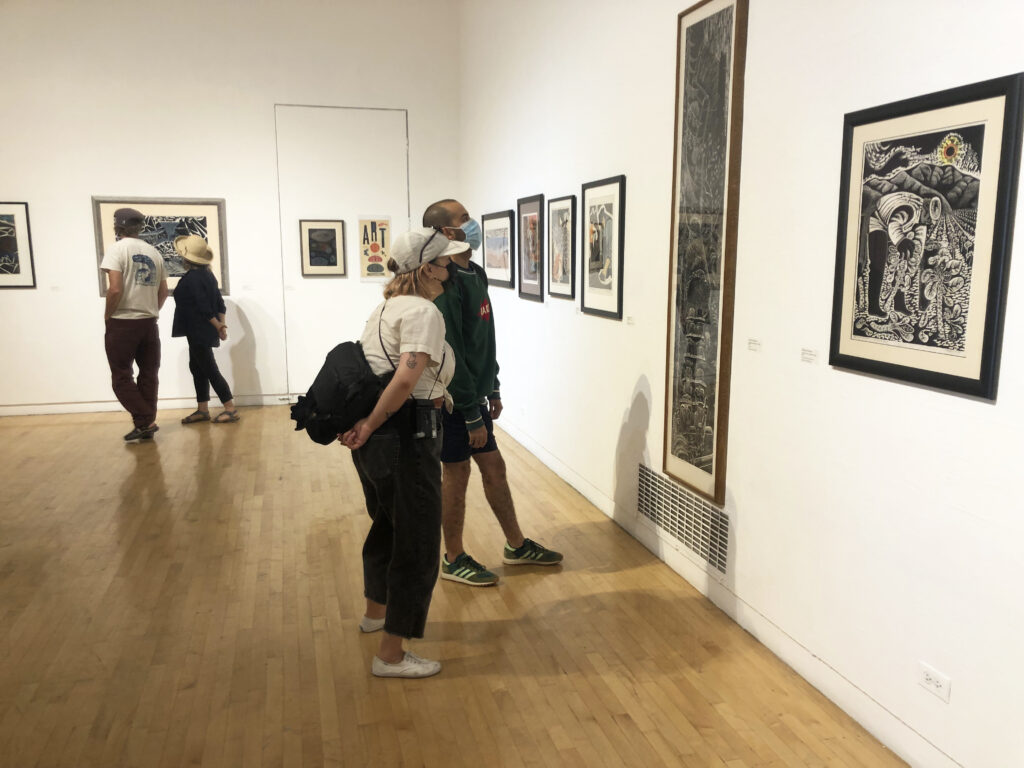
What were some of the stories about Packard's life and her art that were explored in your project's public programming?
Public events presented with Emmy Lou Packard: Artist of Conscience offered the opportunity for audiences to dig deeper into Emmy Lou Packard’s artistry and influence.
Towards the end of her life Packard was admired by many young artists in San Francisco whom she mentored. Among these artists were Jesus “Chuy” Campusano, Luis Cortázar, and Michael Rios who called themselves “Los Tres.” Susan Cervantes, founder of Precita Eyes Muralists Association, was also a devoted mentee and friend, as were members of Las Mujeres Muralistas who painted the murals on the San Francisco Women’s Building.
For the exhibition the curators were able to borrow Packard’s original press, tools, and linoleum blocks from Precita Eyes. For a special public program master printer Art Hazelwood gave a demonstration of the press in action. With permission from Packard’s family, Hazelwood demonstrated Packard’s unique color-blocking technique using the linoleum block for Someone Has to Suffer, Madam (1950s). This work depicts a businessman with a pig’s head with war contracts in his back pocket. The pig-man has his arm around the shoulders of a grief-stricken woman. This is one of Packard’s more overtly political works, which comments on the human cost of stock market greed especially during war times.
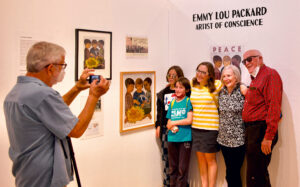
Richmond Art Center also collaborated with the San Francisco Museum of Modern Art’s exhibition Diego Rivera’s America for special events promoting the two shows, enhancing audiences for both exhibitions through performances by The Great Tortilla Conspiracy at each venue. The Great Tortilla Conspiracy created irreverant edible artwork (screen printed on tortillas) inspired by Emmy Lou Packard.
Step inside of the Richmond Art Center on the last day of the exhibition via this short Instagram video Video courtesy Richmond Art Center
